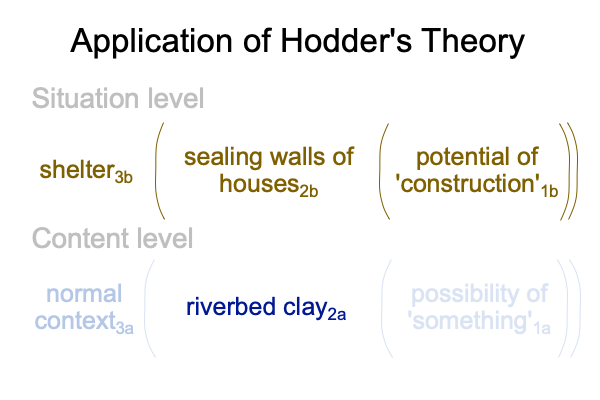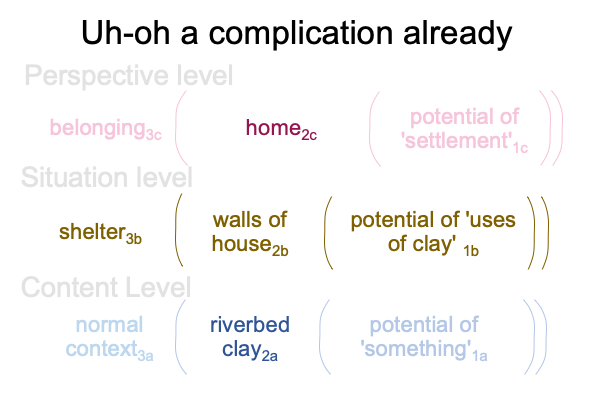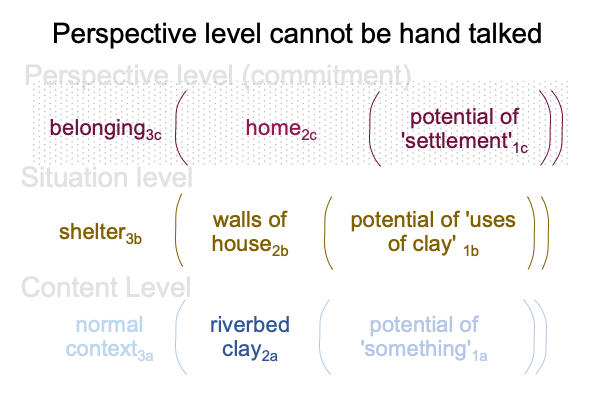0031 Let me return to the example.
What is the problem with the following figure?

0032 The Neolithic houses at Catal Hoyuk are more than shelters. They are more than sensible construction. They are also social constructions.
0033 What is a social construction?
Please note A Primer on Sensible and Social Construction, by Razie Mah, available at smashwords and other e-book venues.
0034 Is there an obvious social construction that goes with the walls of a house?
Yes, the house2b is a home2c.

0035 A home2c puts a house2b into perspective.
One of the difficulties facing archaeologists at Catal Hoyuk involves the imagination.
The closely packed houses2b are obviously homes2c, because people live in them. The inhabitants decorate various rooms. They post the skulls of wild cows on their walls. Are they trophies? Or, are they symbols of divinity? The archaeologist does not know.
Even worse, archaeologists do not know whether the people of Catal Hoyuk ideated any distinction between a trophy or a divinity.
My guess is that they did not.
0036 How so?
Consult the simple The First Singularity and Its Fairy Tale Trace and the complex An Archaeology of the Fall, by Razie Mah, available at smashwords and other e-book venues.
0037 My suspicion is that the people of Catal Hoyuk practice hand-speech talk, rather than speech-alone talk. In hand speech talk, I cannot picture or point to the label, “home”2c. If I picture or point to anything, it would be the house2b.
Here is a thought experiment.
Imagine that I live in Catal Hoyuk.
Even though hand-speech talk cannot label the word, “home”, I can implicitly commit to the conviction that my house2b is my home2c. After all, I use riverbed clay2a to repair the walls of my house2b. I live there.
My house2b is implicitly my home2c, but I cannot explicitly articulate that conclusion, because hand-speech talk only can image and indicate “house”2b.
0038 Hodder does not know this, because the professor has not encountered the hypothesis of the first singularity.
The perspective level can evolve as an adaptation, but it cannot be explicitly abstracted. Instead, it is implicitly abstracted.
See Razie Mah’s e-book, A Primer on Implicit and Explicit Abstraction.
0039 The following diagram places a fine mesh underneath the elements of the perspective level, indicating that this level can adapt to the realness of houses2b, without explicit abstraction of the perspective-level elements. What we call belonging3c, home2c and settlement1c are explicit abstractions that veil the fact that our capacity to “sense” these elements is innate.

0040 Today, with speech-alone talk, I say, “I am going home.”
At Catal Hoyuk, with hand-speech talk, I manual-brachial gesture, “I-GO (point in direction of) HOUSE.”
